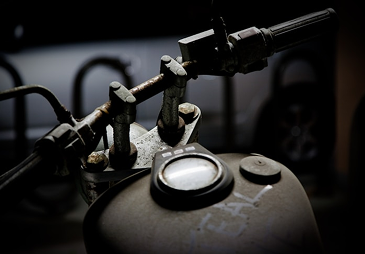
Why ASME Section VIII is Non-Negotiable for Pressure Vessel Safety
When you invest in a pressure vessel, you’re not just buying a tank; you’re investing in critical infrastructure that supports essential operations. It’s an asset that underpins your operations, protects your people, and safeguards your reputation. Amidst all the specifications, capacity, material, footprint, the most critical question you can ask your manufacturer is this: “How do you guarantee safety and compliance?“
For North America’s industrial leaders, the answer begins and ends with the ASME code. This isn’t just a bureaucratic checkbox; it’s the fundamental standard that separates reliable, engineered assets from unacceptable risks.
What is the ASME Boiler and Pressure Vessel Code (BPVC)?
The American Society of Mechanical Engineers (ASME) Boiler and Pressure Vessel Code is the definitive standard for the design, fabrication, inspection, and testing of pressure vessels. Specifically, Section VIII, Division 1 provides the comprehensive rules for this equipment. It is the gold standard that ensures a vessel is built to safely handle its specified pressure and temperature over its intended service life.
A tank bearing the ASME “U” stamp signifies that a certified manufacturer has built it under a rigorous quality control program that includes third-party inspection and verification.
Decoding the Stamp: The Business Benefits of ASME Compliance
Translating the technical requirements of the code into tangible business advantages reveals why insisting on ASME certification is a strategic imperative.
1. Uncompromised Safety & Risk Mitigation
The primary goal of the ASME code is safety. By dictating precise calculations for wall thickness, material selection, weld efficiency, and testing protocols, the code directly mitigates the risk of catastrophic failures, such as a Boiling Liquid Expanding Vapor Explosion (BLEVE). Adherence to ASME protects your personnel, the environment, and your community from preventable disasters.
2. Operational Uptime and Reliability
A pressure vessel built to ASME standards is inherently more reliable. The code’s strict requirements for materials and fabrication methods, including non-destructive examination (NDE) of welds, result in a tank that is far less prone to leaks, cracks, or premature failure. This translates directly to less unplanned downtime, higher productivity, and more predictable operations.
3. Asset Longevity and Return on Investment
The engineering discipline demanded by ASME ensures that your vessel isn’t just built for today, but for decades of service. Proper material selection to resist corrosion and precise engineering to handle operational stress mean your investment is protected for the long term. An ASME vessel delivers a superior return on investment by maximizing its operational lifespan.
4. Insurability and Regulatory Acceptance
In the United States and Canada, ASME certification is often a mandatory requirement for obtaining insurance and meeting federal, state, and local regulations. Operating a non-code vessel can expose your company to significant legal liability, fines, and the inability to secure proper insurance coverage.
The Standard That Protects Your Business
At TRIARC Tank, compliance with ASME Section VIII isn’t just a final step in our process; it’s embedded in our DNA. From the initial engineering blueprint to the final hydrostatic pressure test, every stage is governed by our certified quality control system.
Choosing a manufacturer who builds to the ASME code is the most effective decision you can make to protect your business. It’s a non-negotiable commitment to quality, a powerful tool for risk management, and a promise of long-term reliability.
Partner with a manufacturer that prioritizes safety and compliance. Contact the TRIARC Tank team to discuss your next project.

